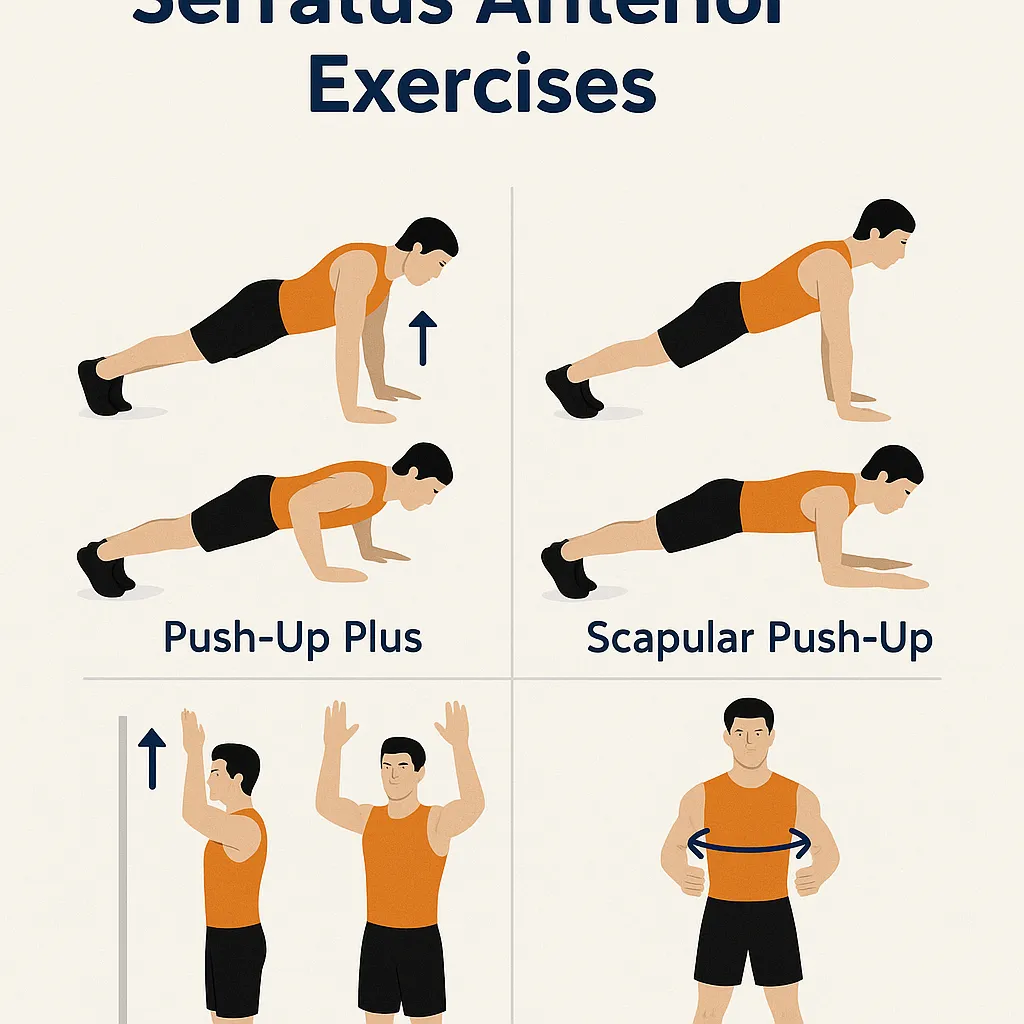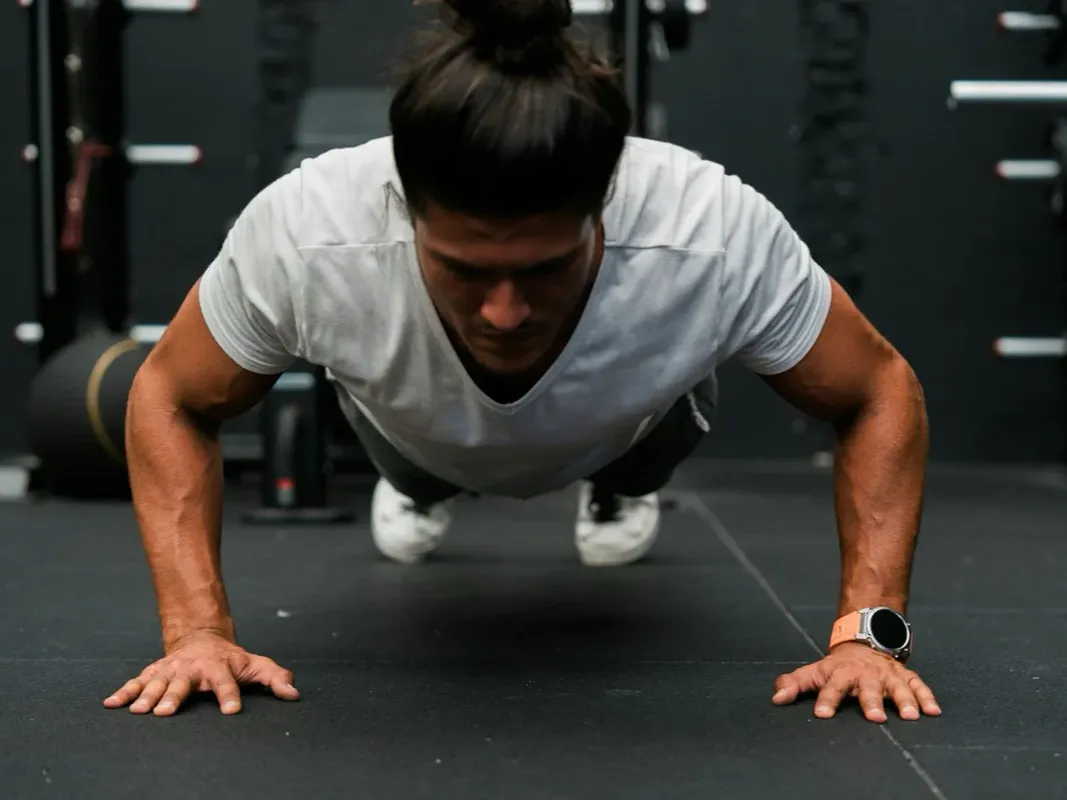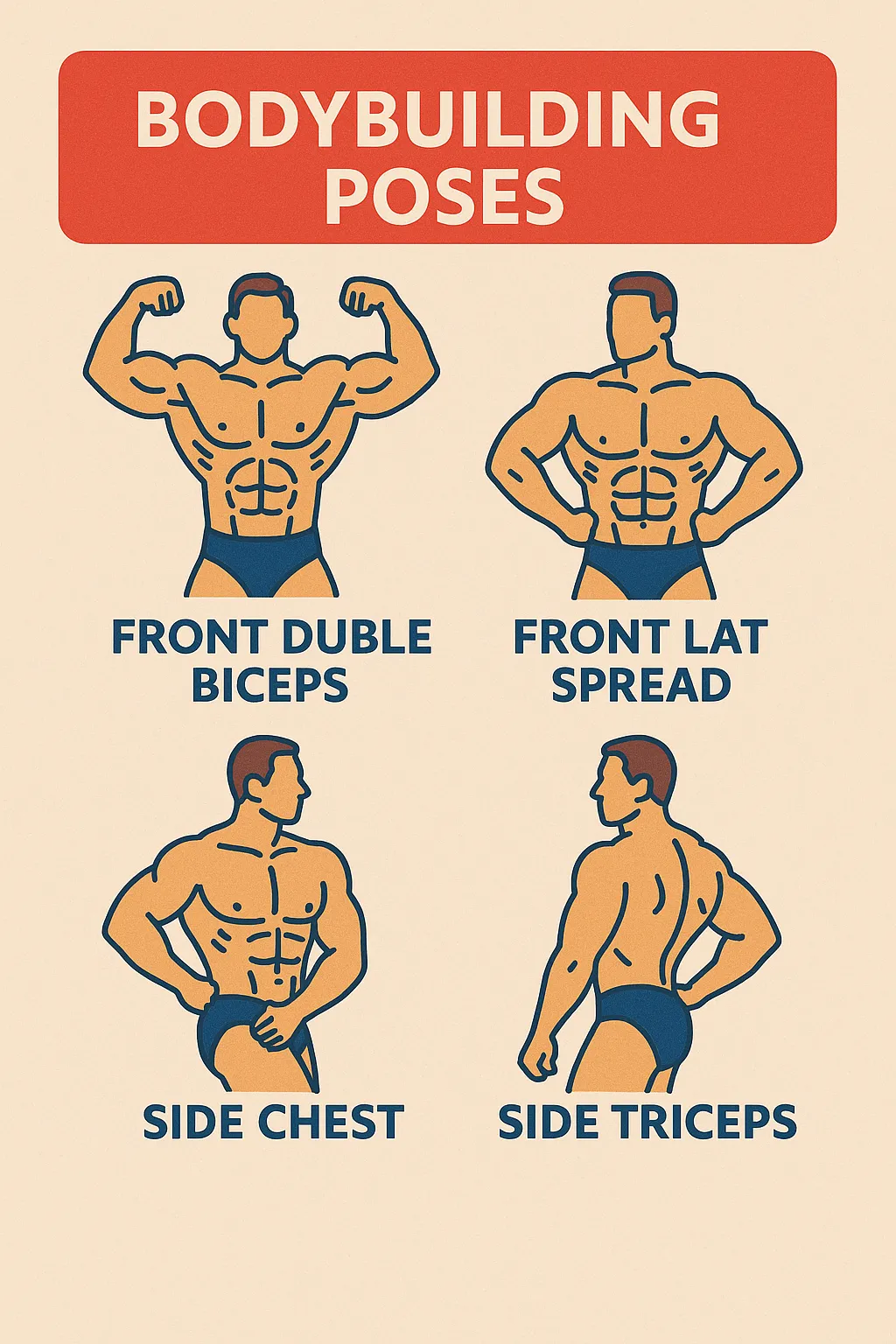It’s important to work on those big muscle groups like your chest, legs, back, and arms during strength training. But there’s another lesser-known muscle called the serratus anterior that is just as vital — and it gets overlooked.

The serratus anterior plays a role in shoulder blade (scapular) stability, helping you with overhead activities and even everyday functions. By adding serratus anterior exercises to your regimen, you may be able to prevent injury, correct your posture, improve scapular stability, and obtain overall strength.
What Is the Serratus Anterior?
So, what is this underestimated muscle of so much importance? The serratus anterior is a large muscle that wraps around the outside of your ribcage. The group of muscles is responsible for scapular (shoulder blade) protraction and helps your shoulders maintain the proper position when making movements like punching. That’s why you might hear this muscle called the “boxer’s muscle” or “big swing muscle.”
The muscle fibres run in the form of a fan, hence the name “serratus,” and this is “saw-toothed” in Latin.
Where is the Serratus Anterior?
The serratus anterior is along the side of the chest, from head to toe, along the top ribs and connecting below the shoulder blades. The mass of the muscle is deep beneath the scapula and pectoral muscles, and in sports physiology, the naked eye can even observe it.
What Does Your Serratus Anterior Do?
From helping you throw a punch to keeping your posture upright, below are some of the things this do-it-all muscle does — and why it’s so important to make it stronger.
Assists With Everyday Movements
When you lift your arms overhead, your serratus anterior muscles on each side turn your shoulder blades around at the outside edges, allowing your arms to move more easily at a higher level. That is why the serratus anterior muscle is so important for everyday movements involving reaching overhead.
Examples: putting on a shirt, placing something on a shelf, throwing a ball overhead.
Supports Scapular Stability
In addition to your rhomboids, the serratus anterior also assists in maintaining your shoulder blades stable. One of them fires when your arms are being pulled forward, and the other one fires when your arms are being pushed back.
Example: when you have weights in front of you, your rhomboids fire so your shoulder blades don’t spread too far apart. Alternatively, when you’re pushing against something, your serratus anterior takes over to prevent your shoulder blades from collapsing inward.
Helps Maintain Good Posture
A weak serratus anterior will compromise your posture. That’s because when it’s contracting properly, the serratus anterior assists in stabilizing the shoulder blades, creating an open chest and raised posture. Good posture not only makes you stand a bit taller, but can also keep you out of back and neck pain.
Prevents Injury
The serratus anterior is a protective muscle as well. Most importantly, it prevents winged scapula (or scapular winging), a condition developing from a weakened or dysfunctional serratus anterior muscle.
One develops a winged scapula when one of your shoulder blades protrudes; it becomes challenging to perform simple movements such as picking up your child or grocery shopping. A healthy, functioning serratus anterior also protects your neck from pain since it enables your arms to move in a wide arc of motion without compressing your neck.
For all of these reasons, you should strengthen your serratus anterior. Without this working muscle, you can look forward to more neck and back pain, an increased risk of injury, and a limited range of motion through your arms and shoulders.
What Happens When the Serratus Anterior is Weak?
Strengthening the serratus anterior is important not just for a toned body or improved physical performance, but for getting through each day without pain. A weak serratus anterior muscle can be a contributor to several difficulties, including:
• Reduced range of motion or instability with your shoulder blades
• Shoulder, chest, or upper back pain
• Postural imbalance, causing neck pain or headaches
The 3 Best Serratus Anterior Exercises from The Bar Method
Strengthening your serratus anterior will not only make your day-to-day life better, but may even make your other exercises better, as it stabilises your scapula and aids overhead exercises such as overhead presses and dumbbell bench presses. Our expert instructors chose their three favourite serratus anterior exercises below.
1. Diagonal Shoulder Walks
Benefits: Enhance stability in the scapula, facilitate upper-body mobility, and strengthen the serratus anterior, rotator cuff, and deltoids.
How to:
• Start standing with feet hip-width apart and knees slightly bent. Engage your core muscles and sit tight.
• Stand with light dumbbells held diagonally at the sides with your arms straight.
• Lift the dumbbells up to shoulder height. Avoid swinging your arms and upper body.
• Lower the dumbbells back down to the initial position. Keep your shoulders relaxed the whole time.
• Repeat for 2–3 sets of 10–15 repetitions.
2. Push-Ups
Benefits: A classic move that works arms, chest, shoulders, and the scapular area.
How to:
• Begin in high plank position with legs hip-distance apart and wrists stacked underneath shoulders.
• Bend elbows and pull them toward body to slowly lower yourself down until your chest reaches the ground.
• Press your body back from the floor back into the top plank position. Avoid letting your hips and spine dip down towards the floor.
• Do for 2–3 sets of 10–15 reps.

3. Shoulder Swivels
Benefits: Often used as an upper-body warm-up, but still very effective.
How to:
• Stand with your feet shoulder-width apart, holding one heavy weight in each hand by the heads. Hold the weight on your thighs with your palms facing toward each other.
• Press your shoulders down and lift the weight to chest level.
• Relax your elbows and rotate the weight to a vertical position, with one head on top of the other. Press your palms into the weight to engage your pecs.
• Swivel (also known as rotate) the weight so that the other head is facing up.
• Repeat 2–3 sets of 10–15 reps.
Note: For a greater challenge, add a little lift between each swivel.
3 At-Home Serratus Anterior Exercises
If you cannot make it to the studio or you just need a little assistance, you can do these serratus anterior exercises at home. You can also include these serratus exercises in a physiotherapy program to improve your posture, increase scapular strength, increase stability, and relieve joint pain.
1. Serratus Punch
How to:
• Lie on your back on the floor with your arms at your sides, holding one dumbbell in each hand.
• Lift both arms up above your shoulders with straight elbows.
• Protract the shoulder blades by pushing them shoulder blades forward.
• Alternate with retraction by squeezing the shoulder blades back.
• Repeat for 2–3 sets of 10–15 reps.
2. Bear Crawl
How to:
• Start on all fours with hands and knees shoulder-width apart.
• Crawl on one hand and the other foot; switch the crawling with the other hand and opposite foot.
• Stay low to the ground as you repeat this movement using alternating hands and feet.
• Do the exercise for 2–3 sets of 15–20 second duration.
3. Serratus Wall Slides
How to:
• Stand in front of a wall, with your shoulder-width apart feet. Position forearms against the wall at shoulder level.
• Press your forearms against the wall and pull your shoulder blades forward.
• Slide your forearms up the wall. Squeeze your shoulder blades back and together, keeping your elbows close to your body.
• Slide up the wall only as high as you can maintain a flat back and active core. Slowly slide your forearms back down the wall to start again.
• Repeat it again for 2–3 sets of 10–15 reps.







